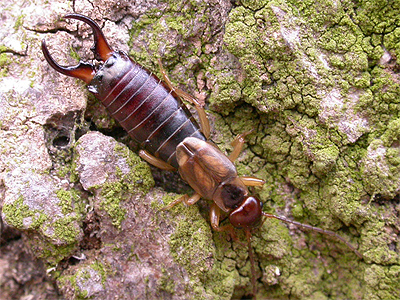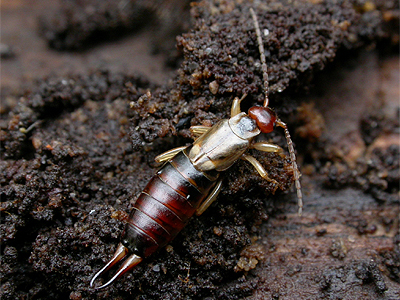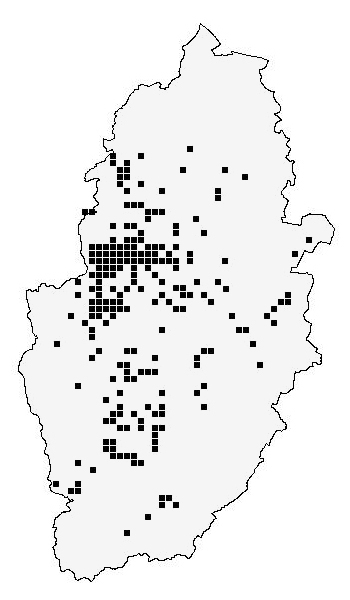| An extremely
common and well known insect, Earwigs feed on a diet of
plant and animal material. They rest during the day in
crevices, especially under loose bark and hollow plant
stems, frequently over-wintering in such places. Female
Earwigs are extremely maternal, laying a small number of
eggs in an underground chamber, protecting them
throughout the Winter months and then remaining with the
nymphs until they become independent. There are just four
species of Earwig found in the UK, and they belong to the
order Dermaptera. |




